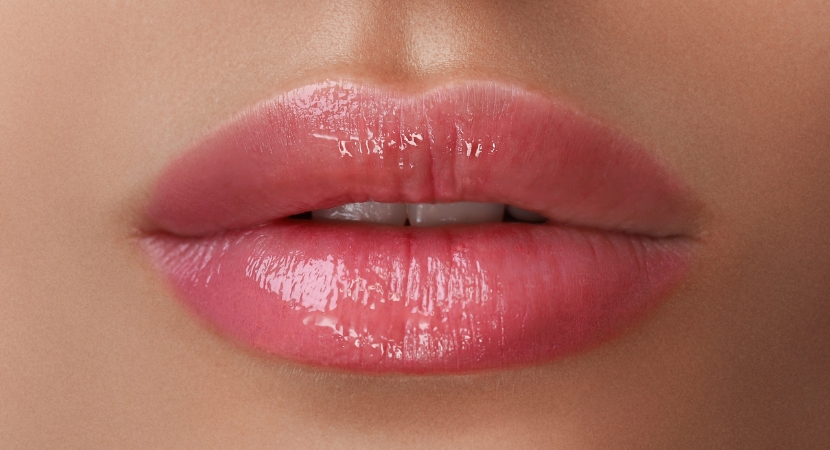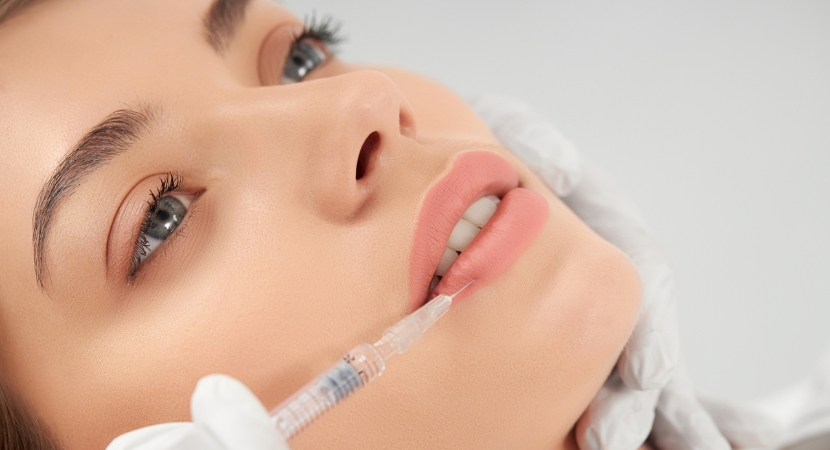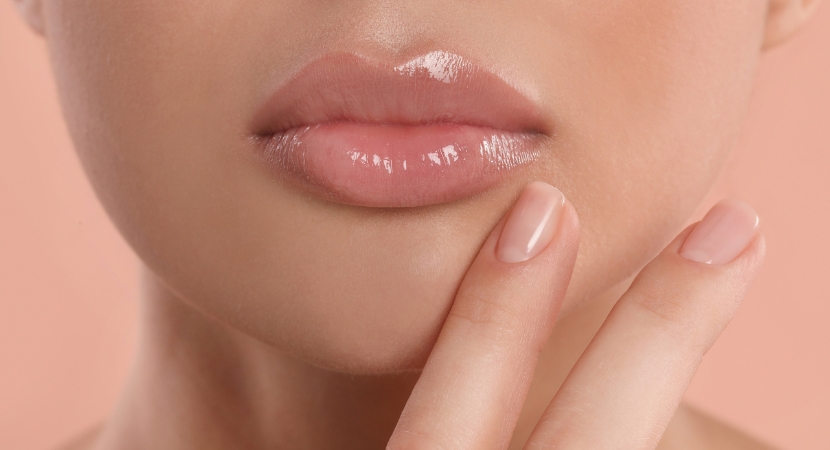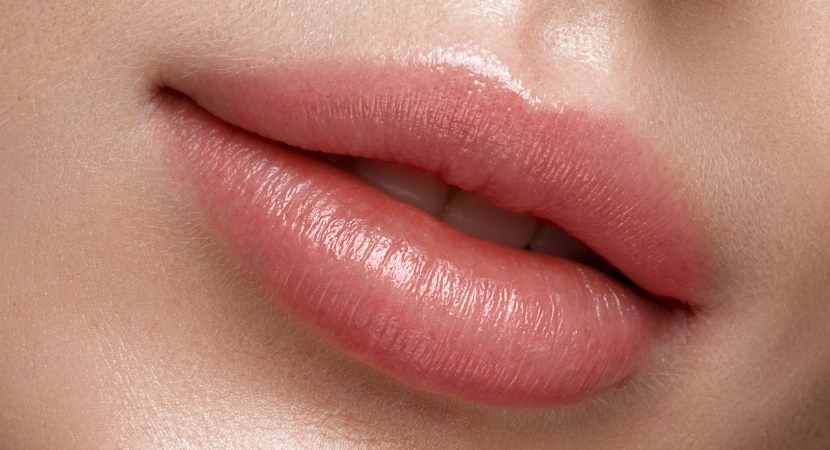
What is Lip Aesthetics?
Lip aesthetics is a form of treatment that considers the symmetry between the upper and lower lips and produces results that enhance the beauty of a person's face. Lip aesthetics can also be used to treat thin lips and other related contour anomalies. Lip augmentation is one of the most commonly used applications to give the face an attractive and youthful appearance in today's environment. The goal of this treatment is to achieve an aesthetic appearance that meets personal expectations, as well as functional, balanced lip shape, which can be achieved through various methods, including surgical and non-surgical procedures.
Lips have a significant impact on the aesthetic aspect of the face. For centuries, full, colorful, red lips have been recognized as a vital aspect of a woman's beauty. Plastic surgery also offers treatment for women who do not have thick, bright lips. Thin lips can be accentuated, heartless lips can be thinned, and sagging corners of the lips in older women can be repaired with aesthetic procedures. Permanent makeup or injectable substances can be used to improve lip shape. Plastic surgery can be used to remove sagging or wrinkles around the lips, increase the volume of thin lips, or reduce the size of overly full lips. For people who have sagging around the lips due to aging and have a depressed expression as a result of this sagging, the sagging will be corrected to provide a more attractive and lively appearance. Wrinkles around the lips can be treated with collagen or hyaluronic acid injections, as well as laser therapy in some circumstances.

What are the different aesthetic procedures?
There are various techniques used to enhance the appearance of the lips, including:
• Lip filler injections
• Lip lift
• Intraoral lip cosmetic surgery
• Extraoral lip cosmetic surgery
What should be considered before Lip Aesthetics?
Using blood thinners before lip aesthetics can be problematic. You should stop smoking cigarettes about a week before the surgery. Swelling and bruising, which are commonly encountered after aesthetic procedures, take about 7 days to heal. Consuming hot and cold foods and beverages, as well as movements that strain the lips, should be discouraged after treatment, and liquid foods should be consumed carefully, using straws.
Plastic surgery offers the highest level of service under the guidance of aesthetic and plastic surgery specialists. You can quickly achieve the lips you've always wanted with the most accurate answers to any questions you may have.

Lip Lift
Lip injections, often called fillers or lip implants, are a standard procedure. These procedures give the lips a bee-stung appearance. Lip lifting is another surgical technique that can give you a different kind of pout. And it's not as temporary as lip injections.
What is Lip Lift?
Lip lift is a surgical procedure that reduces the philtrum, the gap between the nose and the upper part of the lip.
The technique enhances the amount of visible pink tissue, giving the lips a deeper, more pronounced appearance. When the lips are open, it also reveals more of the upper teeth.
This is an excellent alternative for people who want to increase the height of their lips rather than the thickness.
Types of Lip Lifts
Lip lifts are offered in various forms and sizes. It is crucial to understand the different types and treatments so you can discuss with the doctor what is best for you.
1. Direct Lip Lift
Also known as a lip lift, the direct lip lift improves the definition of the lip border. A small piece of skin is cut precisely above the upper lip and lifted upwards to increase the visible area with additional vermilion (the pink part of the lips). The area above the upper lip may typically have a thin scar along the length of the incision after this treatment.
2. Subnasal Bullhorn Lip
Lift One of the most common lip lifting treatments is the subnasal bullhorn. The doctor will create an incision along the base of the nose, where it will be less noticeable. The incision is typically shaped like a bullhorn, with the central, right, and left sides of the lip being lifted towards the nose.
3. Central Lip Lift
The subnasal lift is identical to the central lip lift. An incision at the base of the nose shortens the distance between the nose and the upper lip.
4. Corner Lip Lift
Known for providing a more smiling expression to the face, the corner lip lift is also called a smile lift. Making two small incisions at the corners of the mouth and excising a small amount of skin is the way it's performed. Some patients will undergo this procedure alongside another lip lift to achieve larger lips. It is an option for those who believe they have teardrop-shaped lips.
5. Italian Lip Lift
Additionally, the Italian lip lift is almost identical to the subnasal lip lift, involving two incisions under the nose. Typically, it does not leave a visible scar.

Candidates for Lip Lift
For older individuals who would like to close the gap between their lips and nose, a lip lift can be an excellent option. This gap often widens with age, making the lips appear thinner.
Younger adults who have not achieved the desired aesthetics from fillers or find that fillers make their lips look unnaturally thick or duck-like may benefit from a lip lift.
Lip lifts are also a long-term option, so they can help people who are frustrated with filler treatments.
Complications of Lip Lift
Like any other procedure, lip lifting has the potential for complications, which is why it is crucial to have it done by a board-certified cosmetic surgeon with proven results in lip shaping. Cosmetic procedures for lip lifting include:
• Scarring formation
• Poorly healed scar
• There is a risk of bleeding during or after the surgery
• Nerve injury
• Allergic reactions related to anesthesia
Costs for Lip Lift
The costs for lip lifting vary depending on who performs the treatment and where you live. The treatment typically ranges between 1500 and 5000 euros, according to Aesthetic Edit. If you undergo a corner lip lift along with another type of lip lift, it will be more expensive.

What is Lip Augmentation?
Full and plump lips are a sign of youth, attractiveness, and better health. There are several techniques to enhance what you have if your lips are thinning due to natural aging or if you were born with thin lips.
Lip augmentation, also known as lip enhancement, lip fillers, or lip injections, is a procedure that enhances the shape and size of the lips permanently or temporarily. The therapy can be personalized to each patient's requirements to give them a fuller appearance, define their smiles, and even allow patients to turn the corners of their mouths upward.
Types of Lip Augmentation
There are two techniques used in lip augmentation:
1. Using your own body tissue, such as fat or dermal grafting. This is a long-lasting method, and you won't have allergic reactions because it's your own tissue. However, since the tissue needs to be harvested, it may take more time. Liposuction is a procedure that removes fat from the body (usually the abdomen, thighs, or hips). It is then spun at high speed in a centrifuge to filter and purify it before being applied to the lips. The dermis can be a byproduct of another procedure that would otherwise be discarded, such as a tummy tuck, breast reduction, facelift, or a piece of skin cut from under the buttocks or a mole. The outer layer of skin is scrapped off, and a carved dermal graft is implanted into the lips.
2. Using a synthetic implant, dermal fillers are the most common substance used for lip augmentation. Lip dermal fillers are available in various shapes and sizes. Injections with hyaluronic acid or gels, such as Restylane, are the most commonly used lip fillers. Since hyaluronic acid is a naturally occurring component in the body, allergic reactions are uncommon. You can adjust the amount of hyaluronic acid injected to achieve treatments in a series of procedures to get optimal results. It naturally breaks down within seven months. Other synthetic implants, such as GORE-TEX and AlloDerm, can also provide fullness to the lips, but they risk being rejected by the body.
How is Lip Augmentation Performed?
Lip augmentation is performed under local anesthesia and takes about 30 to 40 minutes. If you decide to use fat grafting, you will have liposuction to collect fat tissue from another part of the body. The techniques for the two main forms of lip augmentation are as follows:
• Dermal/Fat Graft: Liposuction is used to remove fat from another part of the body. Before being injected into the lips, it is placed in a centrifuge and spun at high speed to sterilize it. You can repeat the procedure if necessary until you achieve the desired size.
• Synthetic Implant: To provide a rounded appearance, a synthetic substitute for fat is injected into the lips. One treatment is usually enough to achieve a contoured look, but the effects are temporary and will need to be reapplied in the future.
What are the benefits of Lip Augmentation?
It is a personal decision whether you want to undergo lip augmentation. Below are some of the most common reasons for increasing lip size:
• When you smile, your lips become extremely thin and disappear.
• As you age, your lips become thinner.
• You are self-conscious about the thinness and contour of your lips.
• Fuller lips properly complement facial features.
• Lip augmentation will boost self-confidence.

Laser Lip Resurfacing
People enjoy activities that contribute to continuous exposure to the sun and the environment, even if they want to look young and healthy. Ultimately, this causes the skin to appear aged and weathered. However, today there is a wide range of options to counteract the negative effects of the sun.
Smoothing and tightening the skin, removing wrinkles, and correcting pigmentation issues are possible with laser resurfacing. You and your doctor can work together to find a therapy that will make your skin look beautiful.
What is Laser Lip Resurfacing?
Lasers are used to restore the damaged upper layers of the skin. Two different types of lasers are used in the resurfacing procedure. The first laser used for resurfacing is the carbon dioxide laser. Lip resurfacing is now possible with the Erbium: YAG laser.
Resurfacing lasers function by delivering a short burst of high-intensity light to the skin. With each shot, a small layer of skin is peeled away. The laser provides the doctor with precise weaponry to remove layer by layer of damaged skin. Scars are reduced using a laser that can remove modest amounts of tissue at a time.
Laser Lip Surface Recovery
During laser lip surface recovery, the top layer of the skin is removed, leaving a superficial incision on the skin's surface. In the first few days, a dressing is usually applied and changed regularly. The treated area is often uncomfortable, necessitating the regular application of ointments like petroleum jelly. The skin may remain pink for up to 8 weeks, but afterward, it should be adequately healed to conceal any redness with makeup.
Risk of Remodeling with Lip Laser
Since laser remodeling would be uncomfortable without anesthesia, it is always performed under some degree of anesthesia. There will be some pain during the healing process following laser procedures, similar to recovering from significant dermabrasion or superficial burns.
There is a risk of infection during the healing phase, as the skin layer is altered. Lasers remove only a small amount of tissue at once, reducing the risk of scarring formation.

What is Lip Augmentation?
The density of the lips can decrease as the amount of fat tissue in the lips decreases with age or due to the innate shape of the lips in some people being thin. Depending on the type of lip condition or the age of the individual, there are many treatments for augmentation.
• Extraction of Fat from the Human Body and Soft Tissue Treatment
• Filling material.
• Increasing Labial Mucosa
For thickening or contouring the lips, autogenous (obtained from the patient) or synthetic (made for filling) substances can be used. Lip augmentation can be achieved with autogenous substances such as fat grafts, dermal grafts, and fascia grafts. Fat grafting has a low permanency rate as it mainly degrades over time after treatment. Since fascia and dermal grafts are less prone to dissolve, their durability is higher. The size of the lip is increased by placing tissues in it, resulting in thickening. Lip aesthetics is a simple operation that can be performed under local anesthesia. Swelling usually subsides after about ten days of treatment. Thickening of the lip can also be achieved without a procedure by injecting hyaluronic acid, which is found in the human body and can be applied under the mucosa and skin. Calcium hydroxyapatite, a filler that is injected and provides a more durable solution, has recently been developed. The process performed with this material has a duration of seven to eight years.
What is Lip Thinning?
This is a cosmetic technique for thinning lips that are either too thick from an early age or have become too thick as a result of certain conditions. The thick labial mucosa (the bright red part) of the lip is removed, along with the fatty tissue underneath, and a piece with an elliptical shape is sewn to the corresponding area in an appropriate manner. Local anesthesia is used for this simple procedure. Bruising and swelling that occur after surgery disappear after a few days. After the procedure, suturing the mucosa does not leave a mark on the patient's lips.
Conclusion
People's perceptions of beauty are strongly influenced by their lips. The beauty of a person's face is partly determined by the appearance of their lips. Women are considered more attractive when their lips are larger in proportion to the width of their faces and the vermilion level is higher. The golden ratio and horizontal thirds determine the proportions of beauty and attractiveness, including the lips. The golden section has been used to determine the traditional proportions of the lips in relation to the rest of the face since the era of Da Vinci.


